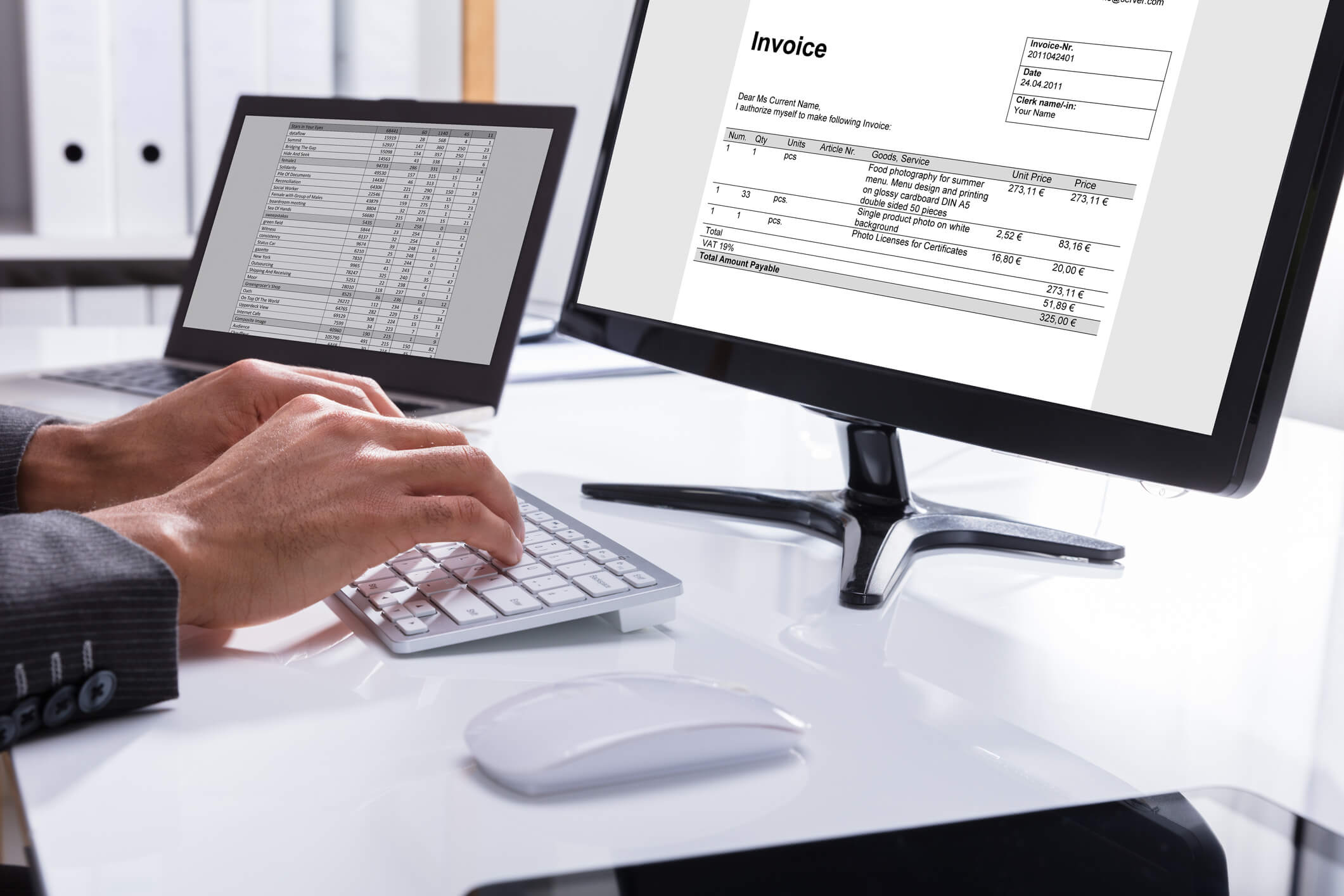Essential Rules for Crafting Invoice Terms and Conditions
Invoice terms and conditions are the contractual clauses that define payment expectations, dispute resolution procedures, and legal protections between service providers and clients. These carefully crafted statements transform simple invoices into enforceable agreements that protect your business interests while maintaining professional client relationships.
After helping over 10,000 small and mid-sized businesses optimize their billing processes through Complete Controller, I’ve witnessed firsthand how proper invoice terms can mean the difference between consistent cash flow and chronic collection headaches. Consider this: 73% of small businesses report increased payment delays, with late payments costing an average of $39,406 annually per business. This article reveals the essential rules for crafting terms that protect your business, accelerate payments by up to 23%, and prevent disputes before they start.

What are invoice terms and conditions?
- Invoice terms and conditions are legally binding clauses establishing payment expectations, timelines, and consequences between businesses and clients
- They transform invoices from simple payment requests into enforceable contracts with clear rights and obligations
- Properly written terms reduce payment delays by establishing specific due dates, accepted payment methods, and late fee policies
- They provide legal protection by defining dispute resolution procedures, limitations of liability, and termination conditions
- Strategic terms incentivize prompt payment through early payment discounts while deterring delays with penalty structures
Understanding the Legal Foundation of Invoice Terms
Invoice terms and conditions operate within a complex legal framework that varies by jurisdiction and transaction type. Their enforceability depends on proper formation, clear communication, and compliance with applicable regulations. Understanding this foundation transforms your terms from wishful thinking into meaningful protection.
Every invoice with terms and conditions creates a contractual relationship between the service provider and the client. For binding status, terms must meet basic contract requirements, including offer, acceptance, and consideration. The invoice represents an offer for payment under specific conditions, while client acceptance occurs through payment, signature, or continued business relationship.
Government contracts operate under specific prompt payment regulations, typically requiring payment within 30 days of proper invoice receipt. The Federal Acquisition Regulation mandates that non-compliant invoices be returned within seven days, establishing clear standards for invoice accuracy and completeness. Private sector transactions face different requirements, though many states have adopted prompt payment legislation affecting certain industries.
Strategic Framework for Writing Effective Payment Terms
Crafting effective payment terms requires balancing business protection with client relationship management. The most successful approaches combine clear expectations with reasonable flexibility, creating terms that clients willingly accept while providing strong collection tools.
Net 30 terms remain standard across most industries, but optimal timeframes depend on your industry, client base, and cash flow requirements. Service businesses often benefit from shorter terms like Net 15 or Net 21, particularly for smaller transactions. Large enterprise clients typically expect Net 30 or longer terms as part of their procurement processes.
Early payment discounts like “2/10 Net 30” can significantly accelerate cash flow by offering clients immediate savings for prompt payment. Research shows discount programs achieve 10-20% annual ROI, with 75% of suppliers favoring buyers who routinely provide early payment opportunities. The discount percentage should reflect your cost of capital while remaining attractive to clients.
Late fee structures must balance collection effectiveness with client relationship preservation. Flat fees work well for smaller invoices, while percentage-based fees scale appropriately for larger amounts. The most effective policies include a brief grace period followed by reasonable penalties that escalate with time.
Essential Components Every Invoice Terms Section Must Include
Comprehensive invoice terms address multiple scenarios commonly arising during the payment process. Each component serves a specific purpose in protecting your business while providing clear guidance to clients. With only 36% of U.S. invoices paid on time and 9% eventually written off as uncollectible, these components become critical for financial health.
Mandatory information requirements
Every invoice must include specific information for legal validity and processability. This includes accurate client billing information, detailed service or product descriptions, clear quantity and pricing breakdowns, and proper business identification. Missing information provides clients with legitimate grounds for payment delays or disputes.
Payment method specifications
Modern businesses must accommodate diverse payment preferences while managing processing costs and security risks. Electronic payment options increase collection rates by 30% compared to traditional check payments. Clearly specify accepted payment methods, processing timeframes, and any associated fees to prevent confusion and delays.
Dispute resolution procedures
Effective dispute clauses establish clear procedures for raising and resolving disagreements before they escalate into collection problems. Specify required notification timeframes, documentation requirements, and escalation procedures. Include dedicated contact information for billing inquiries to streamline resolution processes.

Advanced Legal Protections and Risk Management
Sophisticated invoice terms go beyond basic payment requirements to address complex scenarios that can derail collection efforts. These advanced protections become crucial when dealing with larger clients or higher-value transactions.
Service businesses must carefully balance warranty obligations with liability protection. Clearly define performance standards while limiting exposure to consequential damages beyond the service fee. Product-based businesses should address implied warranties and specify remedy limitations to prevent excessive claims.
Professional service providers often handle sensitive client information or create proprietary deliverables that require specific protections. To prevent disputes over intellectual property, invoice terms should address ownership of work products, confidentiality obligations, and usage rights.
Unexpected circumstances can disrupt service delivery or payment cycles, making force majeure clauses essential for risk management. Define what constitutes unforeseeable circumstances and specify how they affect payment obligations. Include reasonable termination provisions that protect both parties’ interests.
Industry-Specific Customization Strategies
Different industries face unique challenges requiring tailored approaches to invoice terms. Understanding these variations allows your terms to align with industry standards while addressing sector-specific risks.
Professional services requirements
Consulting and professional service businesses must address scope changes, deliverable acceptance, and intellectual property ownership. Terms should specify how additional work gets approved and billed, establish clear deliverable acceptance criteria, and protect proprietary methodologies. Government contractors face additional regulatory requirements around pricing transparency and audit rights.
Product-based business considerations
Manufacturing and retail businesses need terms addressing shipping, delivery, inspection periods, and return policies. Specify risk of loss transfer points, quality standards, and remedy procedures for defective products. International transactions require additional considerations around currency, shipping terms, and governing law.
Subscription service models
Businesses with ongoing service relationships need terms addressing automatic renewals, service level agreements, and termination procedures. Clearly define billing cycles, usage limits, and upgrade/downgrade procedures. Include specific cancellation policies with appropriate notice requirements.
Implementation Best Practices
Even perfectly written terms fail without proper implementation and client communication. Success requires systematic processes that make terms properly presented, acknowledged, and enforced. REVA Air Ambulance exemplifies this principle, achieving 80% reduction in AP processing time through clear terms and automated systems.
Terms buried in fine print or presented at inappropriate times face resistance or go unnoticed. Best practices include presenting terms during initial client discussions, obtaining written acknowledgment before work begins, and reinforcing key points in contracts. Visual formatting and clear language improve comprehension and acceptance rates.
Consistent enforcement requires training all client-facing staff on your terms and their importance. Sales teams should understand how terms affect deal structure, while billing staff must know when and how to apply penalties or pursue collections. Create clear escalation procedures for handling term violations or disputes.
Final Thoughts
Crafting effective invoice terms and conditions represents one of the most powerful tools for optimizing cash flow and preventing payment disputes. The key lies in balancing comprehensive protection with practical enforceability, creating terms that clients accept while providing strong collection tools when needed.
Throughout my years at Complete Controller, I’ve consistently seen that companies with well-crafted, properly implemented invoice terms collect payments faster, experience fewer disputes, and maintain stronger client relationships. The investment in developing comprehensive terms pays dividends through improved cash flow, reduced collection costs, and enhanced business predictability.
For businesses ready to transform their invoicing and collections processes, Complete Controller offers expert guidance on implementing these strategies within your existing operations. Visit Complete Controller to discover how professional bookkeeping and financial management services can support your growth objectives while achieving optimal cash flow performance.

Frequently Asked Questions About Invoice Terms and Conditions
What are invoice terms and conditions exactly?
Invoice terms and conditions are contractual clauses that establish payment expectations, dispute procedures, and legal protections between businesses and clients, transforming invoices into enforceable agreements.
Are invoice terms legally binding without a separate contract?
Invoice terms can be legally binding when properly structured and communicated, though accompanying them with a signed contract strengthens enforceability significantly.
How long should payment terms be for optimal cash flow?
Net 30 remains standard across most industries, though service businesses often benefit from shorter terms like Net 15 or Net 21 for better cash flow management.
What late fee percentage is reasonable and legal?
Late fees typically range from 1-3% monthly or $25-50 flat fees, depending on invoice size. Check local regulations as some jurisdictions limit allowable rates.
Should I offer early payment discounts to clients?
Early payment discounts like “2/10 Net 30” can accelerate cash flow significantly, with participation rates often exceeding 60% when properly structured and communicated.
Sources
- PandaDoc Blog. (2024). “Invoice Terms and Conditions Examples.” Johnson, PandaDoc Team. www.pandadoc.com/blog/invoice-terms-and-conditions-examples/
- Federal Acquisition Regulation. (2017). “52.232-25 Prompt Payment.” U.S. General Services Administration. www.acquisition.gov/far/52.232-25
- Chaser Blog. (2024). “7 Frequent Invoice Disputes and How to Resolve Them.” Miller, Sarah. www.chaserhq.com/blog/7-common-invoice-disputes-and-how-to-resolve-them
- Mercury Blog. (2023). “Guide to Invoice Terms and Conditions.” Peterson, Michael. mercury.com/blog/invoice-terms-conditions-guide
- Taulia Resources. (2024). “United States Payment Terms Regulations.” Thompson, Lisa. taulia.com/payment-terms/united-states/
- Viva Capital Finance. (2024). “7 Proactive Tactics for Avoiding Invoice Disputes.” Davis, Jennifer. vivacf.net/insights/avoiding-invoice-disputes/
- California Department of General Services. (2020). “Verifying the Accuracy and Validity of Invoices – 8422.050.” www.dgs.ca.gov/Resources/SAM/TOC/8400/8422-050
- QuickBooks Resource Center. (2025). “Invoice & Payment Terms: Definitions and Examples for 2025.” Rodriguez, Carlos. quickbooks.intuit.com/r/bookkeeping/choosing-and-defining-invoice-payment-terms/
- Jobber Academy. (2024). “Terms and Conditions Examples for Websites, Invoices, Contracts.” Williams, Amanda. www.getjobber.com/academy/terms-conditions-templates/
- Invoiced Resources. (2024). “Late Fees on Invoices: How to Charge & Calculate.” Brown, David. www.invoiced.com/resources/blog/late-fees-on-invoices
- Old National Bank Resources. (2024). “Unpaid Customer Invoices Are Piling Up, Squeezing Small Businesses.” Gateway Commercial Finance Survey.
- DocuClipper Blog. (2025). “59 Accounts Payable Statistics For 2025.” www.docuclipper.com/blog/accounts-payable-statistics
- ResolvePay Blog. (2024). “10 statistics linking early-pay discounts to supplier loyalty.” www.resolvepay.com/blog/early-pay-discount-statistics
- Ramp Blog. (2024). “7 accounts payable automation success stories and case studies.” www.ramp.com/blog/ap-automation-case-studies
- Taulia Resources Blog. (2025). “The cost of late payments: How cashflow struggles ripple through the economy.” www.taulia.com/resources/late-payments-economic-impact
 About Complete Controller® – America’s Bookkeeping Experts Complete Controller is the Nation’s Leader in virtual bookkeeping, providing service to businesses and households alike. Utilizing Complete Controller’s technology, clients gain access to a cloud platform where their QuickBooks™️ file, critical financial documents, and back-office tools are hosted in an efficient SSO environment. Complete Controller’s team of certified US-based accounting professionals provide bookkeeping, record storage, performance reporting, and controller services including training, cash-flow management, budgeting and forecasting, process and controls advisement, and bill-pay. With flat-rate service plans, Complete Controller is the most cost-effective expert accounting solution for business, family-office, trusts, and households of any size or complexity.
About Complete Controller® – America’s Bookkeeping Experts Complete Controller is the Nation’s Leader in virtual bookkeeping, providing service to businesses and households alike. Utilizing Complete Controller’s technology, clients gain access to a cloud platform where their QuickBooks™️ file, critical financial documents, and back-office tools are hosted in an efficient SSO environment. Complete Controller’s team of certified US-based accounting professionals provide bookkeeping, record storage, performance reporting, and controller services including training, cash-flow management, budgeting and forecasting, process and controls advisement, and bill-pay. With flat-rate service plans, Complete Controller is the most cost-effective expert accounting solution for business, family-office, trusts, and households of any size or complexity.
 Reviewed By:
Reviewed By:




